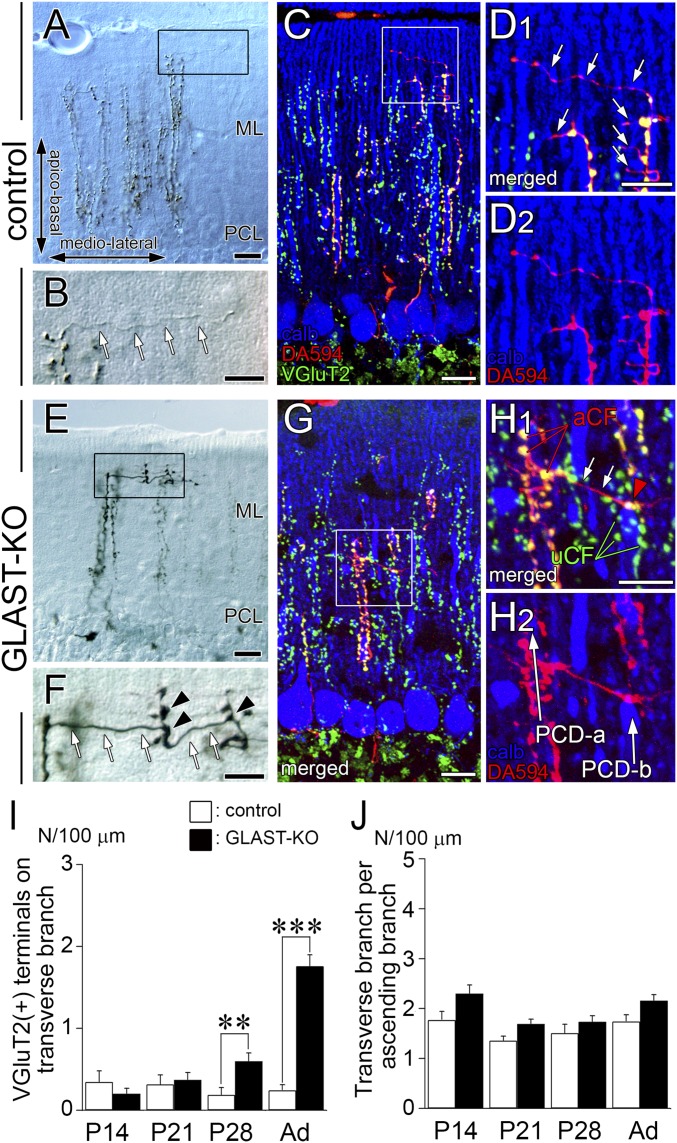Fig. S5.
Aberrant wiring by transverse CF branches causing multiple CF innervation in GLAST-KO mice. Horizontal cerebellar sections in control (A–D) and mutant (E–H) mice. (A, B, E, and F) Phase-contrast views showing CF labeling with anterograde tracer BDA injected into the inferior olive. (C, D, G, and H) Triple fluorescence images of calbindin immunofluorescence (blue), VGluT2 immunofluorescence (green), and DA594 tracer labeling (red). Note that transverse CF branches (white arrows) lack terminal varicosities and VGluT2 accumulation in control mice (B and D), whereas they exhibit numerous varicosities containing VGluT2 (black and red arrowheads) and innervate neighboring PC dendrites in mutant mice (F and H). (I) The density of VGluT2(+) varicosities per 100 µm of transverse CF branches at P14, P21, P28, and adulthood. (J) The density of transverse branches per 100 µm ascending CF branches at P14, P21, P28, and adult. The total measured lengths (mm) of the transverse branches are 2.46, 2.99, 2.35, and 5.30 in control mice, and 3.93, 6.15, 5.33, and 10.9 in mutant mice at P14, P21, P28, and adulthood, respectively. The total measured lengths (mm) of the ascending branches are 16.4, 27.9, 13.7, and 26.1 in control mice, and 16.4, 39.4, 29.4, and 45.6 in mutant mice at P14, P21, P28, and adulthood, respectively. **P < 0.01; ***P < 0.001, Mann–Whitney U test. Error bars represent SEM. (Scale bars: A, C, E, and G, 20 µm; B, D, F, and H, 10 µm.)

